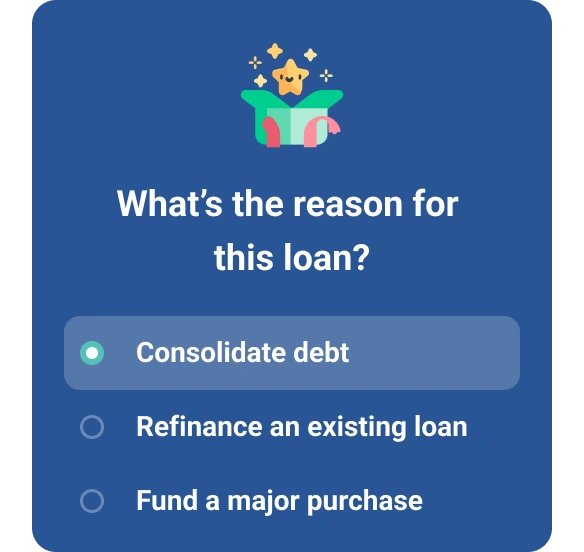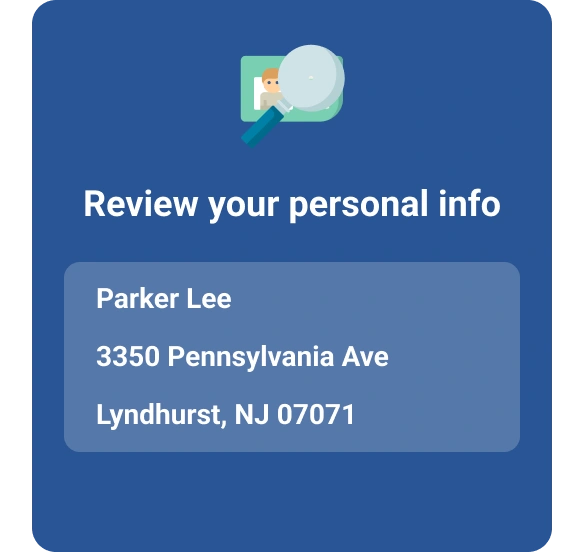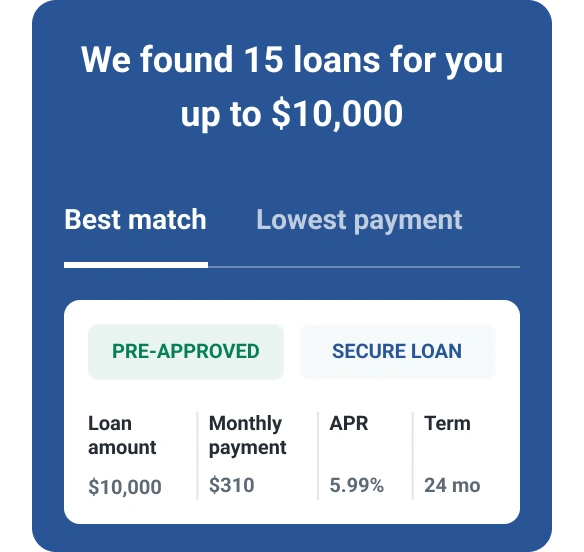How to Prequalify for a Personal Loan
Quick Answer
You can prequalify for a personal loan by gathering the relevant documents and submitting a prequalification application.

Prequalification lets lenders preview your eligibility for a personal loan, giving you an estimate of how much you may be able to borrow, the interest rate you might qualify for and loan terms you may be able to choose—all without affecting your credit.
Prequalifying for a personal loan doesn't necessarily guarantee that you'll qualify when you submit a formal application, but it's a good first step when shopping for a loan. Read on to find out how to prequalify, why it's important and how your credit plays a role.
How to Prequalify for a Personal Loan
The process for prequalifying may vary slightly between lenders but can typically be completed in a few simple steps.
1. Check Your Credit Scores
Your credit scores are one of the key factors lenders review to determine your eligibility. Credit scoring criteria vary by lender, but you typically need scores of at least 580 to qualify for a personal loan. Borrowers with higher credit scores typically have an easier time qualifying and receive lower rates.
If you're unsure how your credit scores stack up, you can check your FICO® ScoreΘ for free from Experian at any time.
Tip: High interest rates on personal loans can make monthly payments unmanageable. If you don't qualify for a low rate because of your credit scores, it may be in your best interest to take some time to improve your credit and reapply in the future.
2. Research Lenders
Lenders don't use a single set of criteria to determine an applicant's loan eligibility. Lending requirements, rates, terms, fees and funding timelines vary by institution, so it's worth checking out several lenders to find one that best suits your needs.
An easy way to compare lenders is to use an online comparison tool. If you're looking for a personal loan, Experian can show you personal loans matched to your unique credit profile, allowing you to easily make an apples-to-apples comparison.
3. Submit Prequalification Forms
You can typically apply for prequalification on lender websites by providing a few pieces of information about yourself, including your name, address, phone number and Social Security number. You may also need to give details about your income, loan amount and how you plan to use the money.
Because lenders generally use a soft credit inquiry to prequalify borrowers, the process shouldn't affect your credit scores. Getting prequalified with more than one lender allows you to compare multiple offers without damaging your credit.
4. Compare Offers
When comparing offers from different lenders, start by reviewing the interest rate, term and amount to calculate your monthly payment and determine how much interest you'll pay over the life of the loan. But don't stop there.
You'll also want to consider additional features and benefits lenders may provide, such as financial planning assistance, mobile app features or the potential to qualify for a rate discount if you meet certain criteria.
Because prequalification isn't a loan offer, you may qualify for a different loan amount, term and rate if you submit a formal application and are approved.
What to Do if You Can't Get Prequalified for a Loan
If you don't get prequalified, the lender is required to tell you why. Using the information they provide to improve your creditworthiness may increase your chance of being approved in the future. Here are some things that may help.
- Dispute inaccuracies. You have the right to dispute information on your credit reports that you believe to be inaccurate or fraudulent. If the lender denied your application because your credit history included inaccurate negative information, contact the three consumer credit bureaus (Experian, TransUnion and Equifax) to submit a dispute.
- Improve your credit score. Your credit score is one of the most important factors lenders use to determine whether you qualify for a loan. If any of your accounts are past due, bring them current as soon as possible and consistently make your payments on time going forward to demonstrate your ability to use credit responsibly. Reducing the amounts you owe and applying for credit sparingly may also strengthen your credit profile.
- Pay down debt. No matter how great your credit scores are, you still need to be able to show that you can repay what you borrow. Lenders that think you're overextended may be less likely to offer you more credit because they view you as higher risk. Lenders calculate your debt-to-income ratio (DTI) (your monthly debt payments compared to your income) to help determine whether you have the capacity to borrow more. Paying down existing debt may improve your chances of qualifying in the future.
- Apply with a cosigner. If the lender rejected your application because you have poor credit or a thin credit file, applying with a cosigner who has good credit may help you qualify. Because a cosigner is on the hook for your loan payments if you're unable to make them, lenders may feel more comfortable approving your application.
Tip: Checking your credit reports regularly can help you identify potentially fraudulent activity so you can take care of it right away. You can check your Experian credit report for free anytime, and you can check your credit reports from all three bureaus at AnnualCreditReport.com.
Prequalification vs. Preapproval: What's the Difference?
When shopping for a loan, you may hear the terms prequalification and preapproval. While they may sound similar, they are two separate processes. Here's a brief overview of how each works.
- Prequalification: Prequalification is an informal process that doesn't require a deep dive into your finances. When you apply for prequalification, the lenders make a decision based on the information you provide and a soft credit pull. They don't verify the details you include on the prequalification form; they take your word that the information is accurate.
- Preapproval: A preapproval is a more formal process that includes a closer look at your finances. When you apply for preapproval, the lender confirms the information you provide before making a decision. A preapproval may also require a hard credit check, which usually temporarily decreases your credit score by a few points.
Tip: Some lenders use the terms prequalification and preapproval interchangeably. If you want to avoid a hard credit pull before submitting a formal loan application, look for lenders who say applying won't affect your credit scores.
What to Do After a Loan Prequalification
Prequalifying can provide valuable information about the amount, rate and term you may qualify for if you decide to apply for the loan. But it's just the first step in the process. If you want to formally apply for one of the offers you receive, here's what you need to do next.
- Choose a lender. After reviewing the prequalification offers you receive, choose the one that's the best fit for you and formally apply.
- Submit a loan application. Application requirements may vary slightly by lender, but generally, you need to complete the institution's loan application, which can often be done online. You'll usually need to provide information to verify your identity, employment and income. Unlike when you apply for prequalification, you'll likely be required to provide supporting documentation, such as pay stubs or tax returns, and the lender will confirm the details you provide. The lender will also conduct a hard credit check.
- Receive a formal approval or denial. After reviewing your application and checking your credit history, the lender will approve or deny your loan request.
- Review the loan offer. If the lender approves your application, it's essential that you review the offer to ensure you understand the terms, especially if they're different from what you saw when you prequalified. If you're unhappy with the terms, you don't have to accept the offer.
- Get loan funding. If you accept the loan offer, the lender will fund your loan. Funds are usually deposited into your account electronically or sent directly to creditors, if you're using the loan to consolidate debt.
- Set up autopay. Setting up autopay when the lender opens your account can help you avoid late or missed payments, which can negatively affect your credit.
How Prequalification Affects Your Credit
Prequalification doesn't typically affect your credit because lenders usually use a soft credit check during the process. If you're unsure whether applying for prequalification will impact your credit, check the lender's policy before applying. You can usually find this information on their website.
The Bottom Line
Prequalifying for a personal loan is fast and easy and can typically be completed online in a few simple steps. While prequalifying can give you an estimate of your potential loan amount, interest rate and loan term, it's not a formal loan offer. You must submit a loan application to find out whether you qualify.
After a more in-depth review of your finances and credit history, the lender may decide not to approve your application or offer a loan with a different rate or term than what you received during prequalification.
Need a personal loan?
Whether you're looking to eliminate debt or access cash fast, compare personal loan offers matched to your credit profile.
Start now for freeAbout the author
Jennifer Brozic is a freelance content marketing writer specializing in personal finance topics, including building credit, personal loans, auto loans, credit cards, mortgages, budgeting, insurance, retirement planning and more.
Read more from Jennifer

